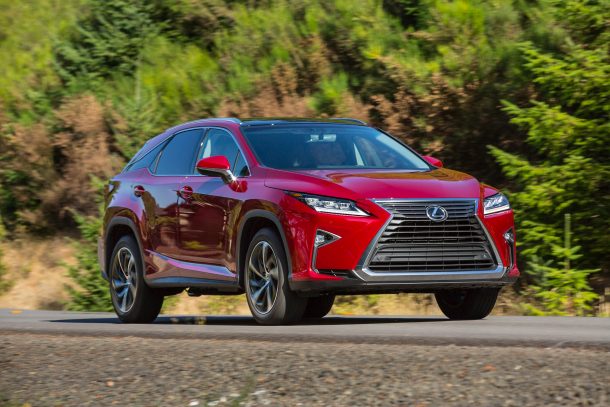AV and EV Collide, Revealing Apple's Self-driving Car Program in Action

Accident reports sometimes reveal more than just who was at fault. A rear-end collision in Sunnyvale, California, last week was truly a product of our modern age — an electric car slamming into the back of what would have been a human-operated crossover, were it not owned by Apple.
While the iPhone maker abandoned its Project Titan self-driving car project in 2016, it didn’t leave the autonomous vehicle field altogether. The August 24th collision shows it.
According to an accident report uncovered by Reuters, the Apple test vehicle was not a so-called “iCar” — a term tossed around back when Apple had a fully self-developed vehicle in its sights — but a Lexus RX 450h outfitted with autonomous driving gear.
The report claims the Apple-operated vehicle was in autonomous mode, attempting to merge onto the southbound Lawrence Expressway at less than 1 mph, when the collision occurred. While slowed and waiting for a gap to open up (in what was hopefully very slow-moving traffic), a 2016 Nissan Leaf collided with the rear of the vehicle at a speed of about 15 miles per hour.
Apple confirmed the accident report but wouldn’t say which vehicle was at fault. Neither the human minder on board the Lexus or the driver of the Leaf sustained injuries.
In June of last year, Apple CEO Tim Cook revealed the company was indeed working on self-driving vehicle technology, calling it “the mother of all A.I. projects.” It secured a permit to test autonomous vehicles on California roads around the same time.
Still cloaked in secrecy, information on Apple’s efforts does exist. The company reportedly has 5,000 people working on the project, many of them focused on developing circuit boards and a proprietary chip. Sixty Apple test vehicle ply California’s roads, permits show. One of the tech giant’s areas of focus involves developing software to help self-driving vehicles spot pedestrians.
[Image: Lexus]

More by Steph Willems
Latest Car Reviews
Read moreLatest Product Reviews
Read moreRecent Comments
- Funky D There are WAY too many of what my youngest son calls grayscale (white, black, silver, gray) out there.I will pick literally ANY color (including that baby puke yellow found on new Chevy crossovers) over a grayscale color. But if every car I had was arrest-me red, I'd be find with that.What happened to the 60s~80s when you could choose from a pretty rich color palate when placing your new car order?
- Tassos Jeep again proving they stand behind freedom. The freedom to choose the fuel you use. I’ll take one in ”Right to express myself freely” pink.
- Jeff Good move on Cadillac's part. Not everyone is ready for an EV it will take more time to expand the charging infrastructure and more affordable EVs.
- 3-On-The-Tree I was never a fan of the newer dodge products but it’s still a shame that all the OEM’s are moving away from V8’s to turbo V6 and V4’s all in the name of emissions and better mpg.
- FreedMike I like the idea of EVs, but the idea that they're going to achieve 100% market penetration was a fantasy to begin with. Also worth noting; Cadillac is on track to sell well over 20,000 Lyriqs this year. Not too shabby. https://www.coxautoinc.com/wp-content/uploads/2024/04/Q1-2024-Kelley-Blue-Book-Electric-Vehicle-Sales-Report.pdf


































Comments
Join the conversation
I foresee problems, that such futuristic society will think bad of few left drivers, overblaming them for slowing down/interfering with automated vehicle movement (eg. not starting to go at green light within milliseconds like eg. AVs will), and for each and every trafic incident, just like currently overblown bad rap for any accident involving AVs. Bad humans! Humans err! Shouldn't be allowed to drive and put lives at risk! And goverment will follow populistic policies/mindset of lazy majority not knowing/caring to drive themselves, rising to insane levels taxes & insurance costs for anyone still wishing to drive own car. It will probably end with retro (by then) cars be driveable by humans only on rare trackdays on special closed off tracks.
"It will probably end with retro (by then) cars be driveable by humans only on rare trackdays on special closed off tracks." Kind of like horses today. The irony will be using your AI truck to "drive" your retro car to the track to enjoy driving like the good ole days.